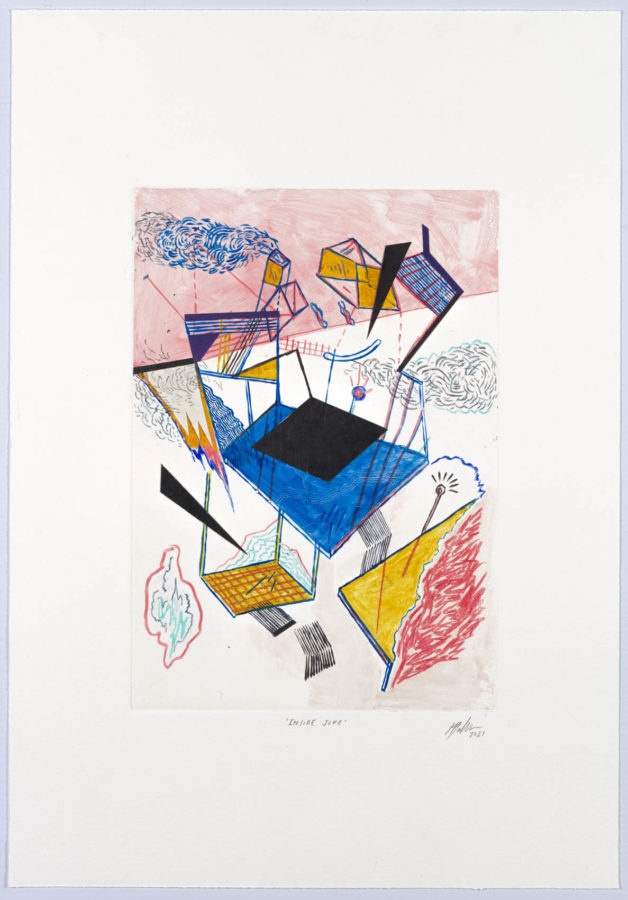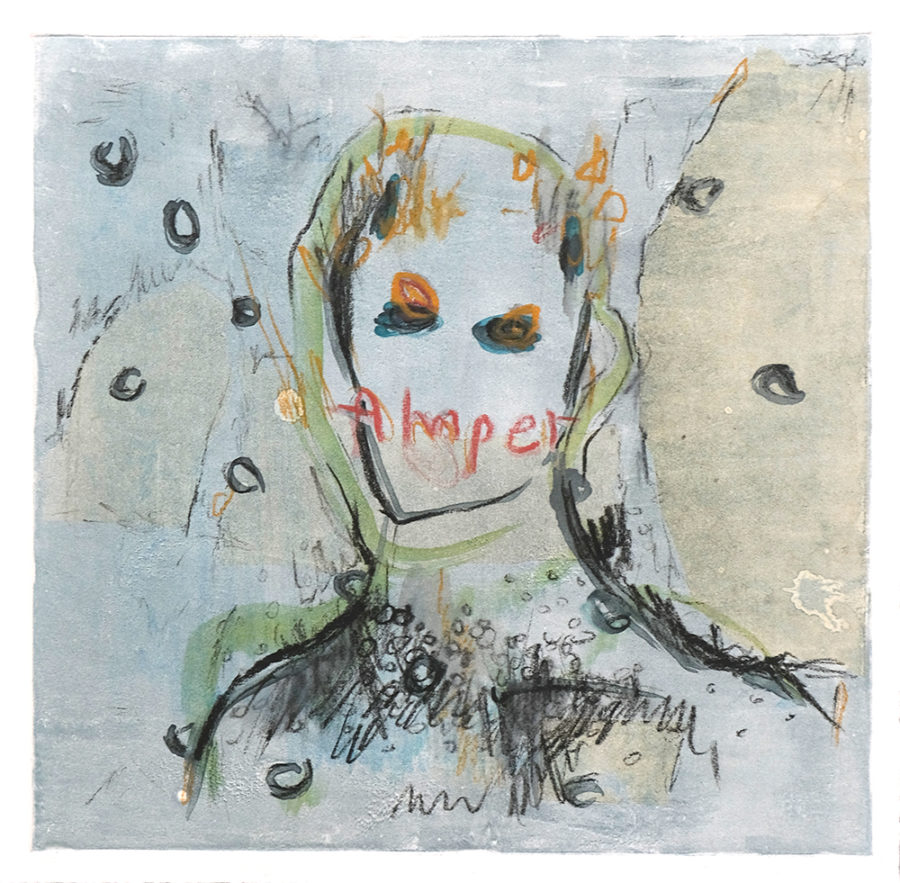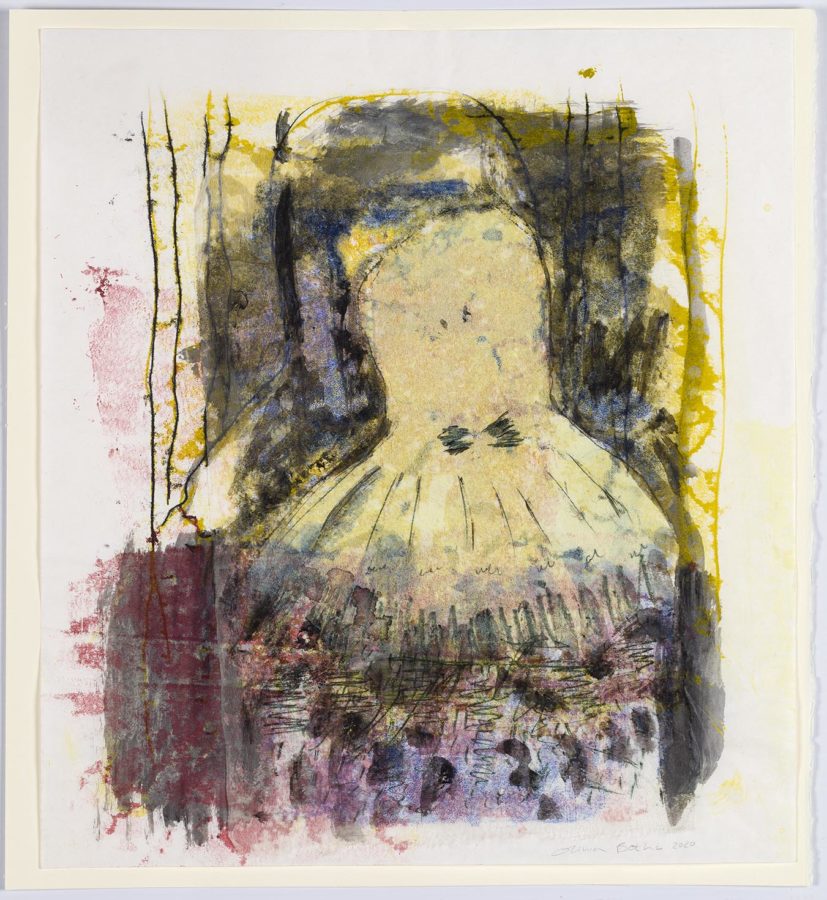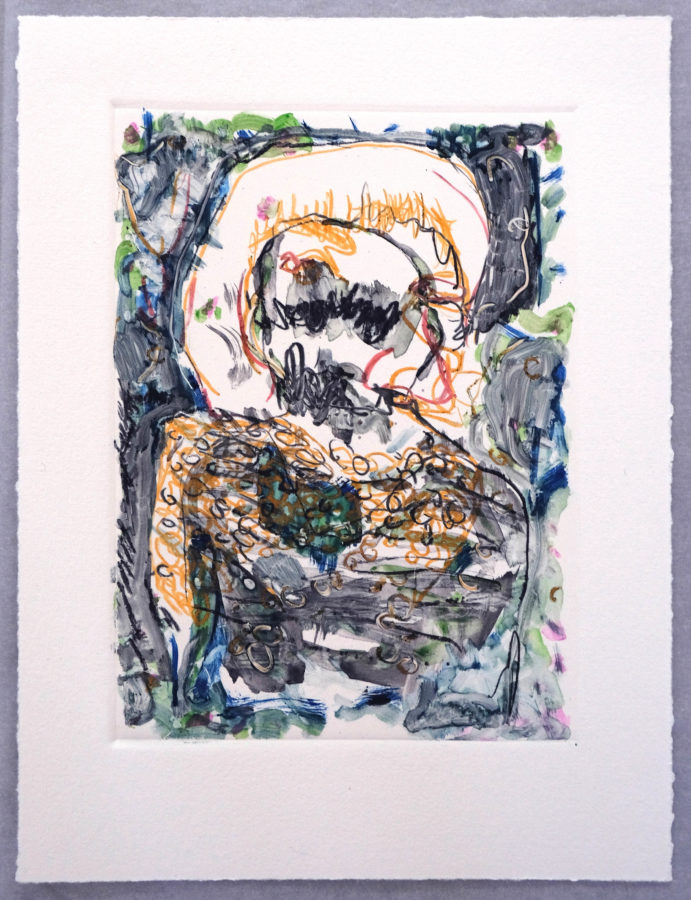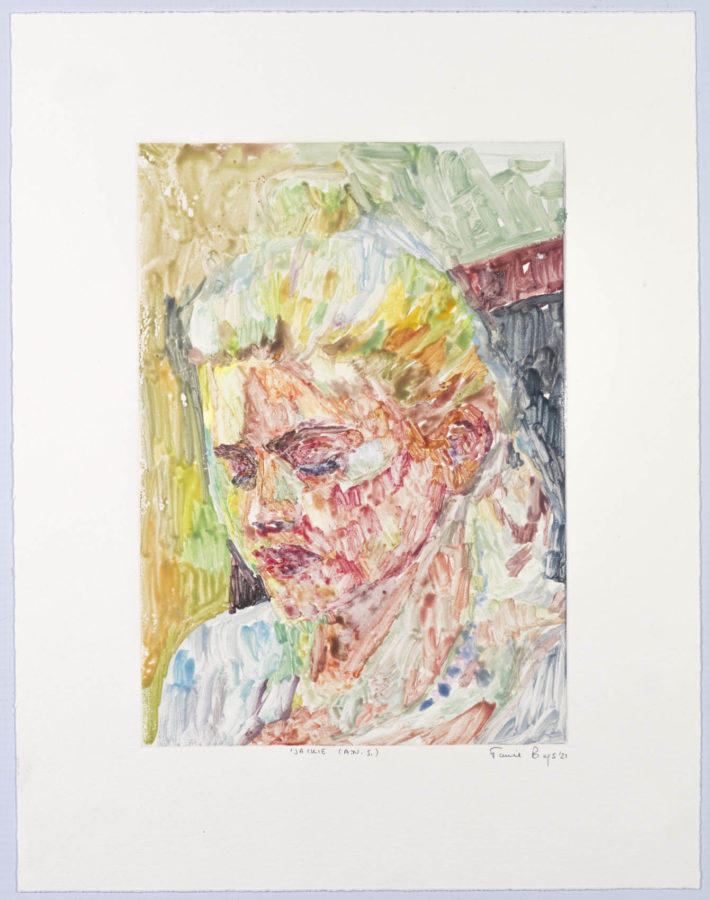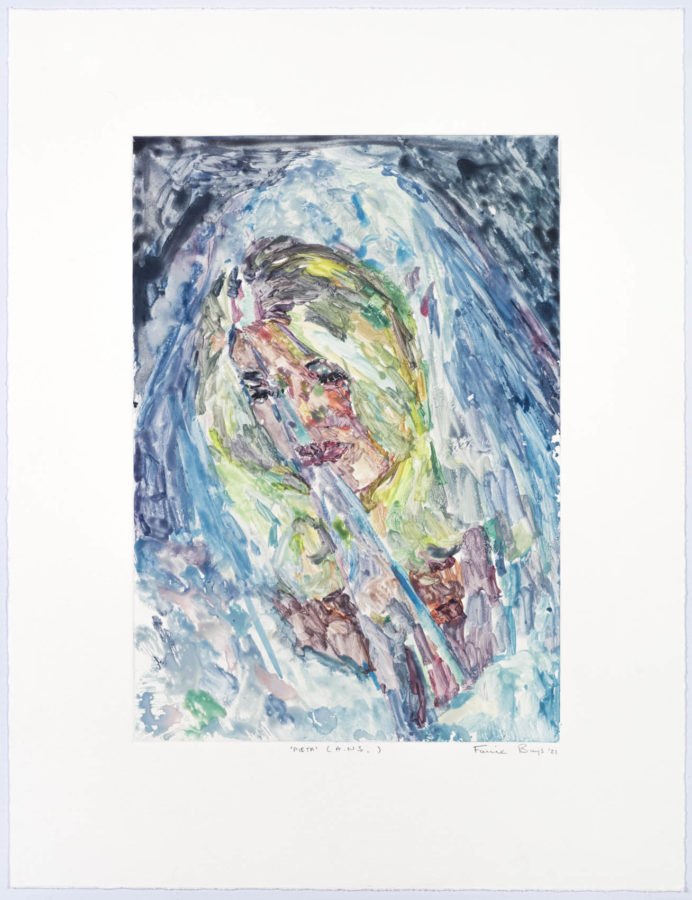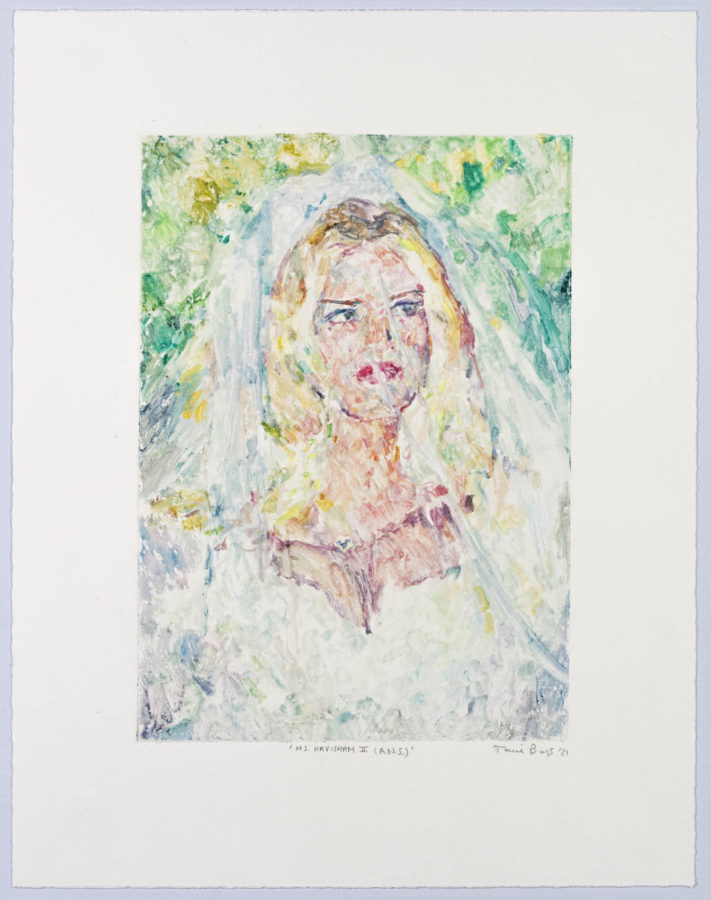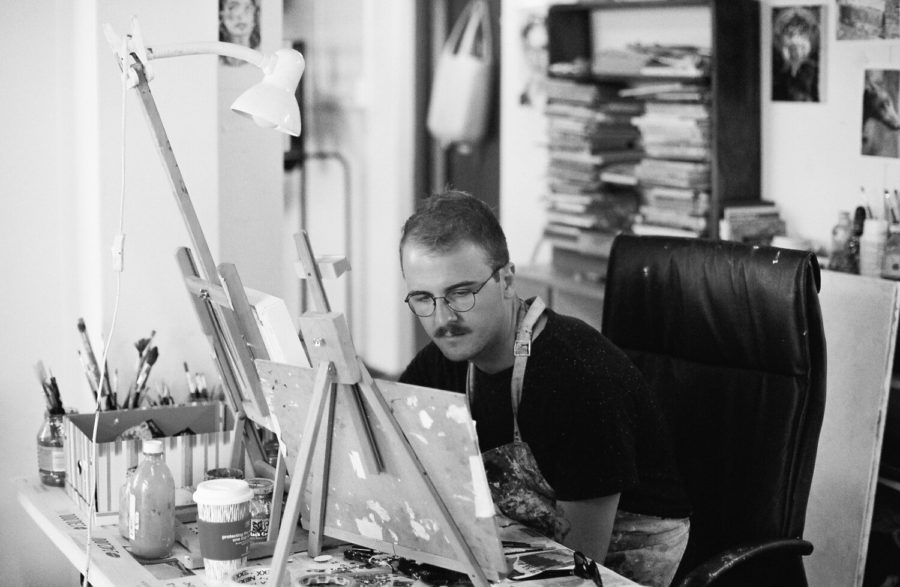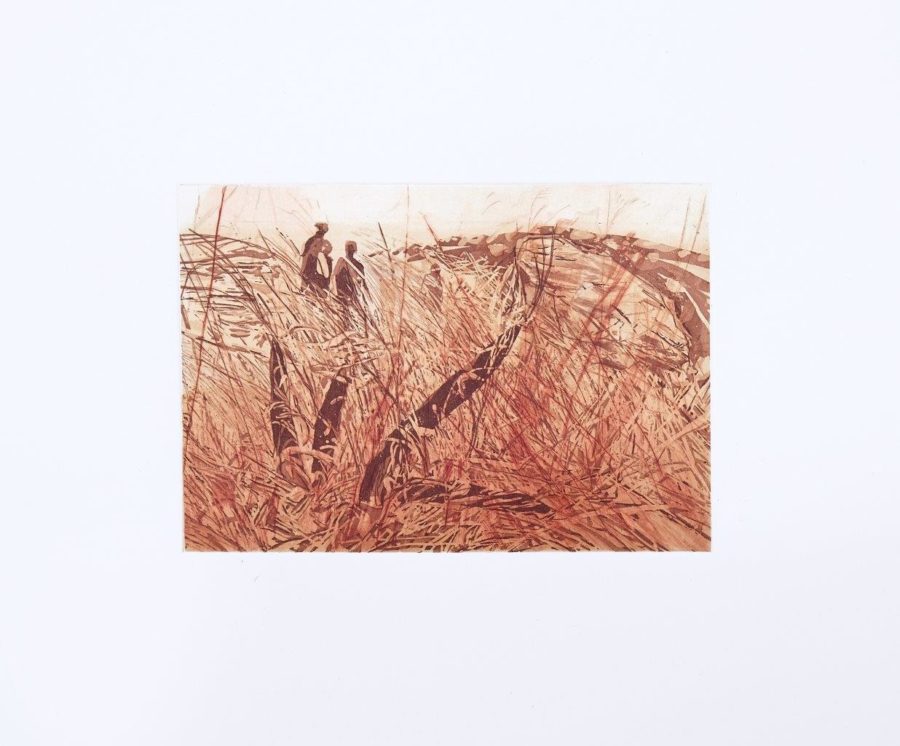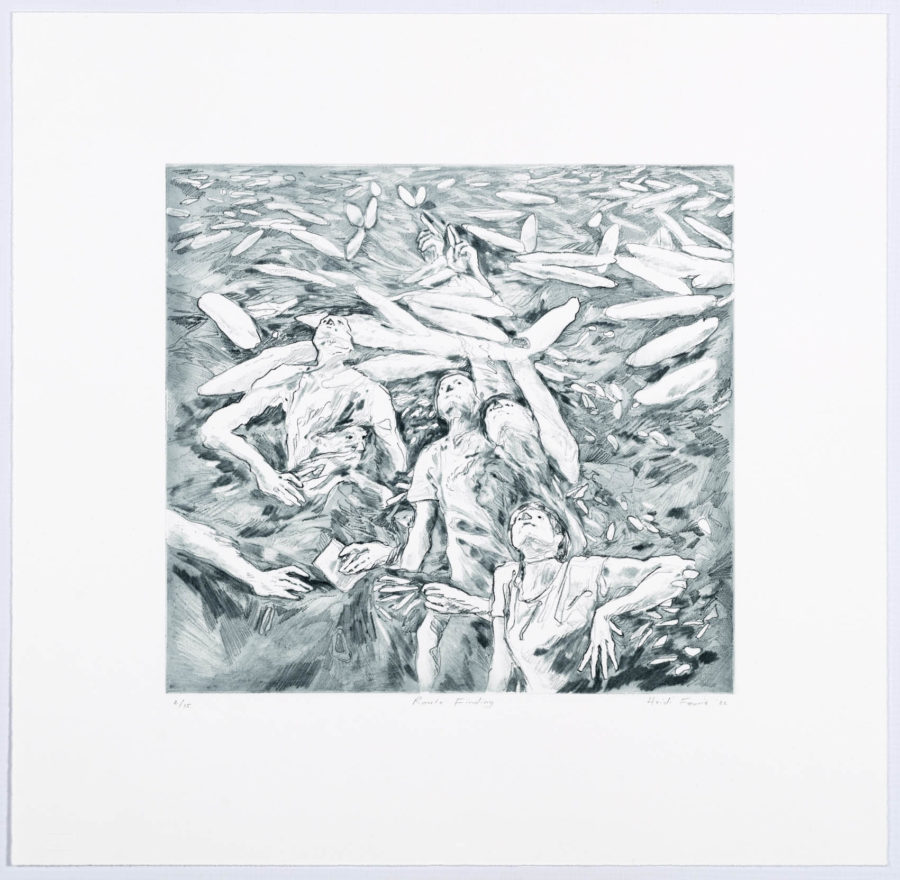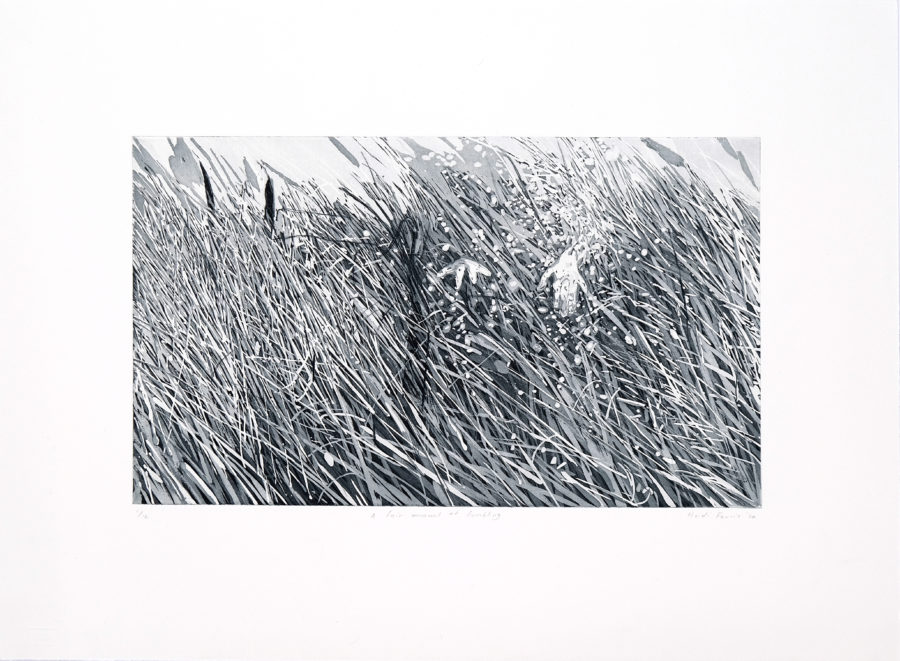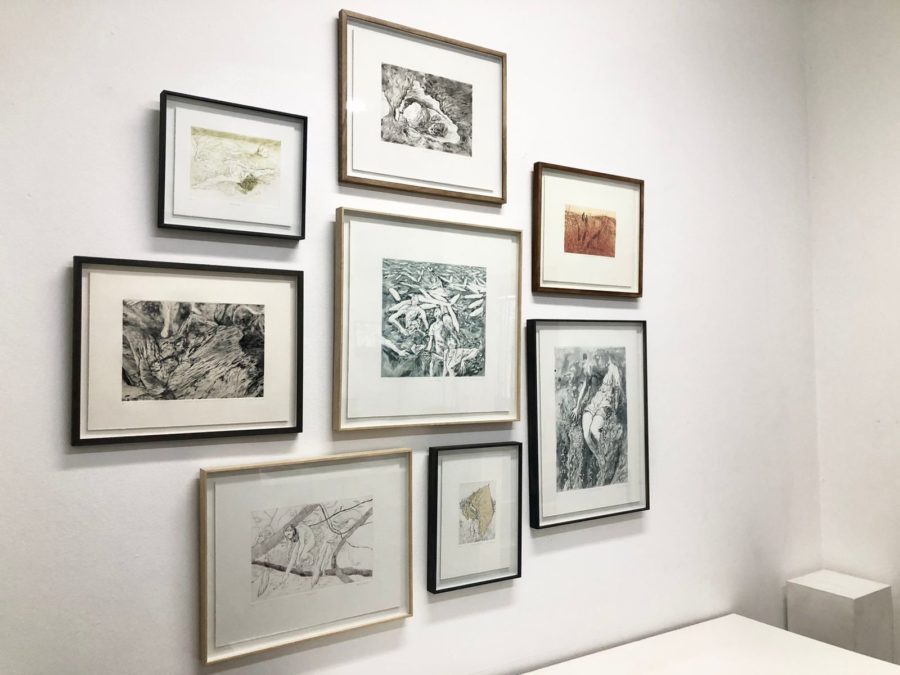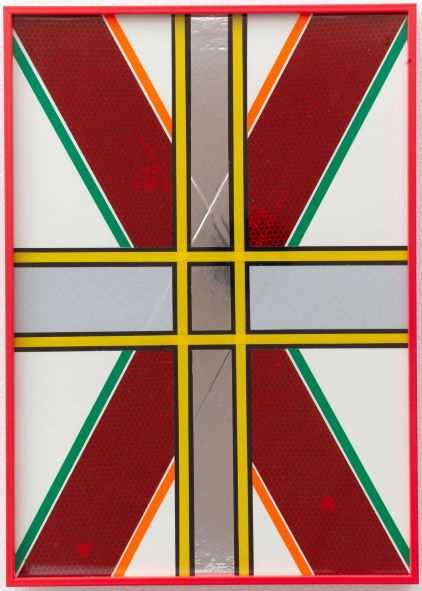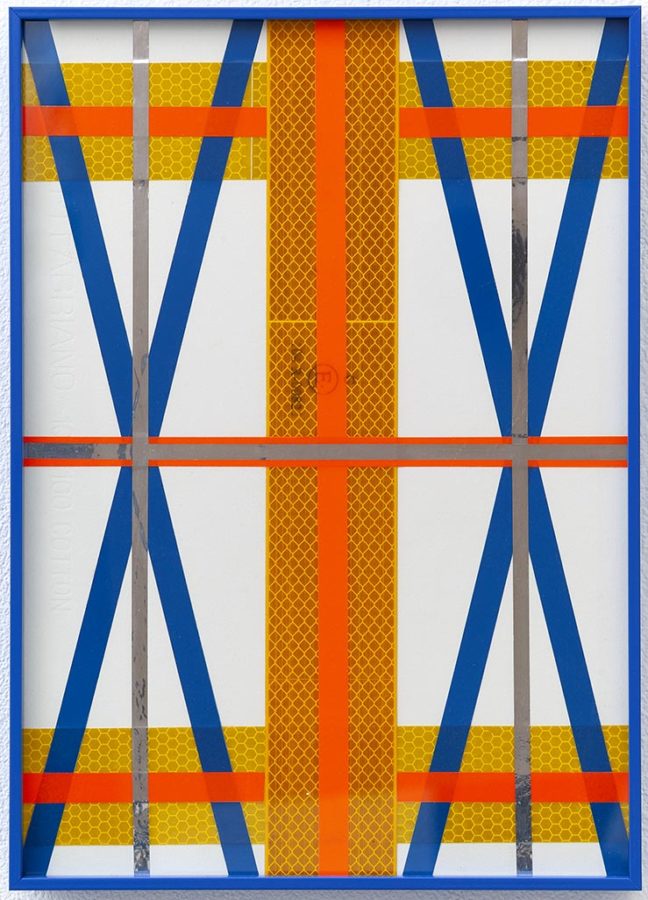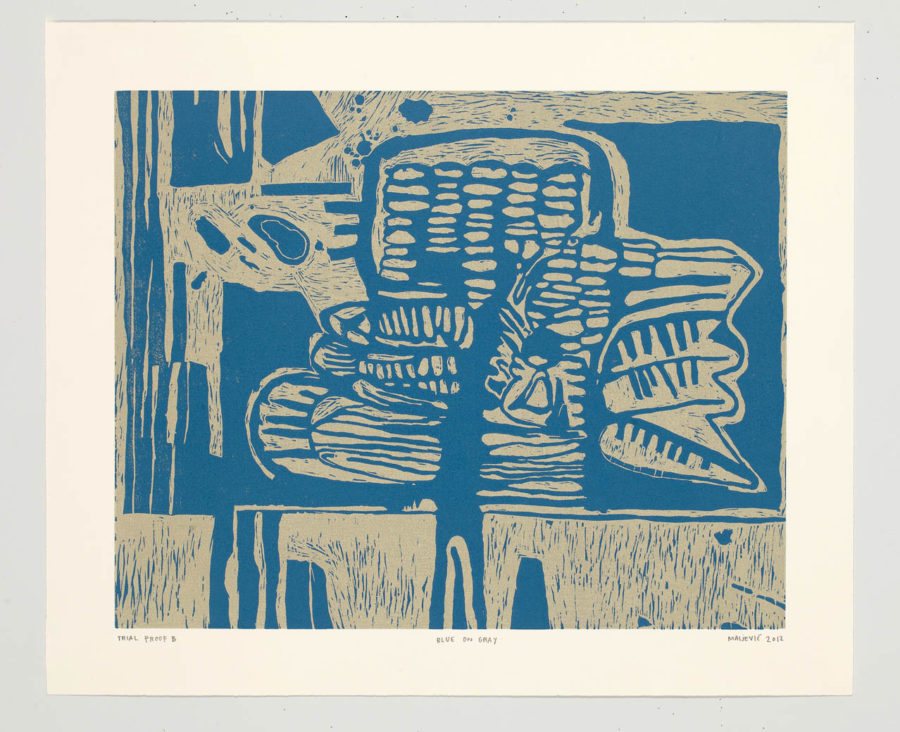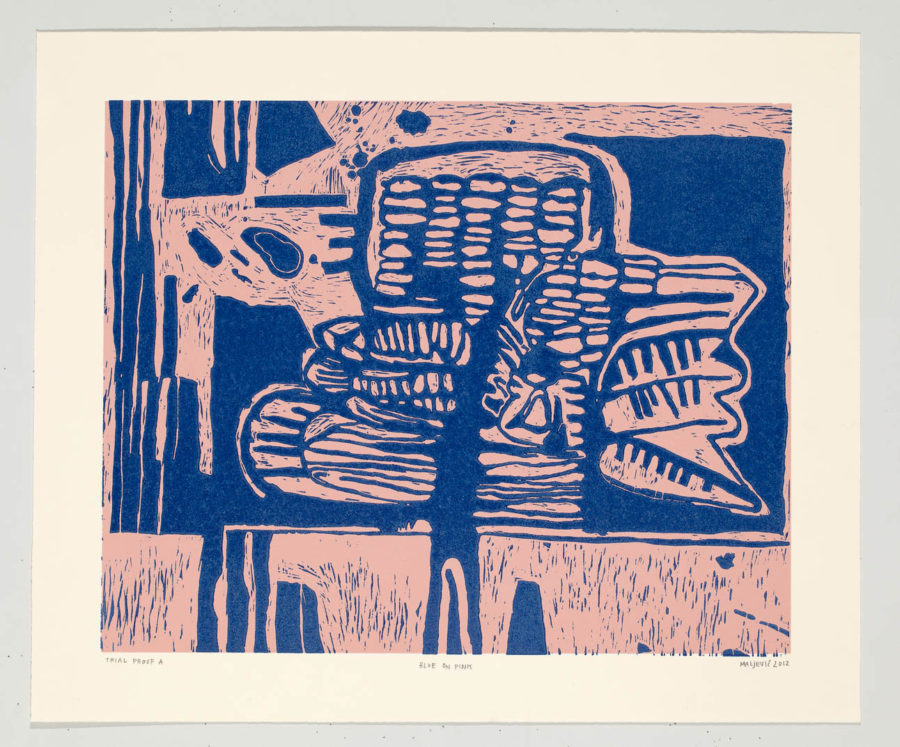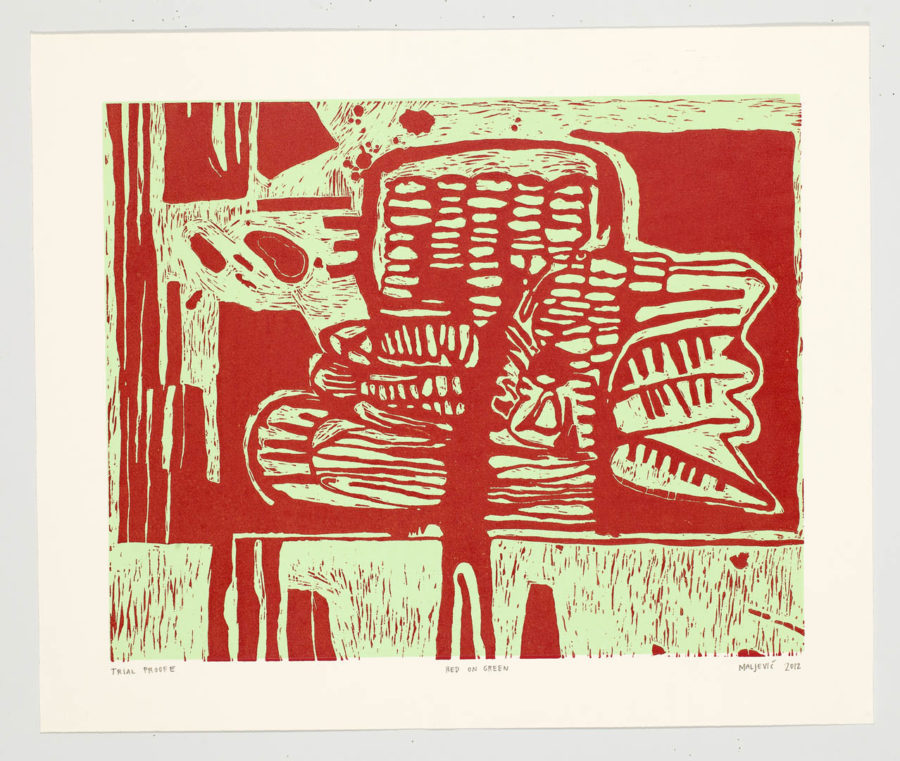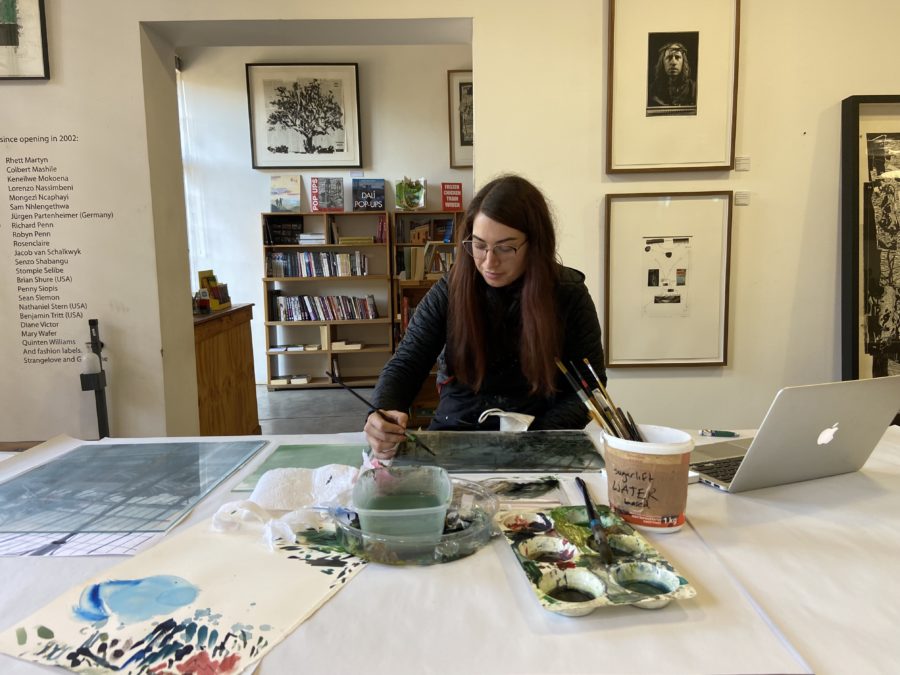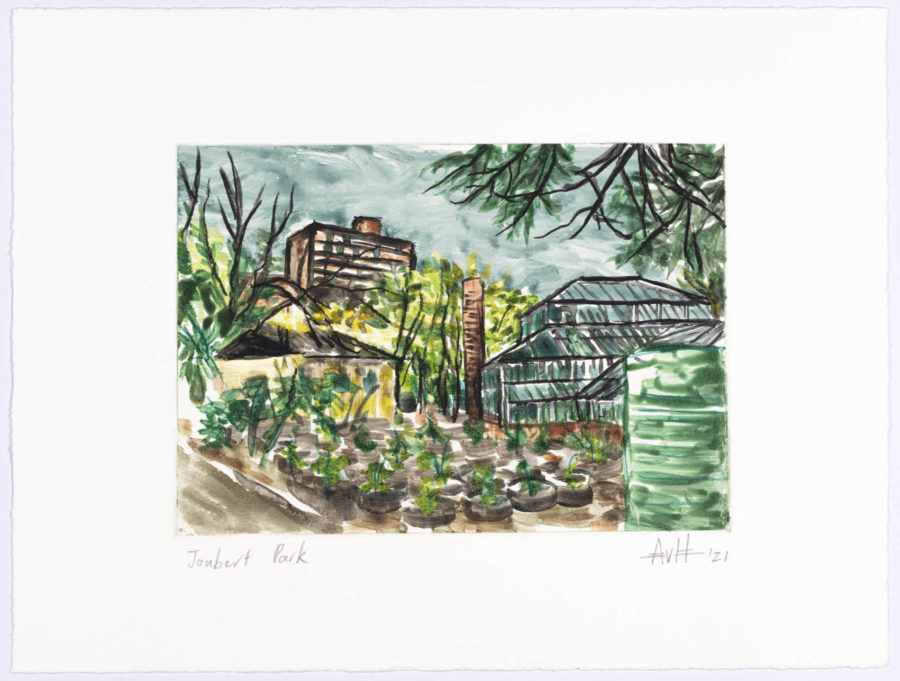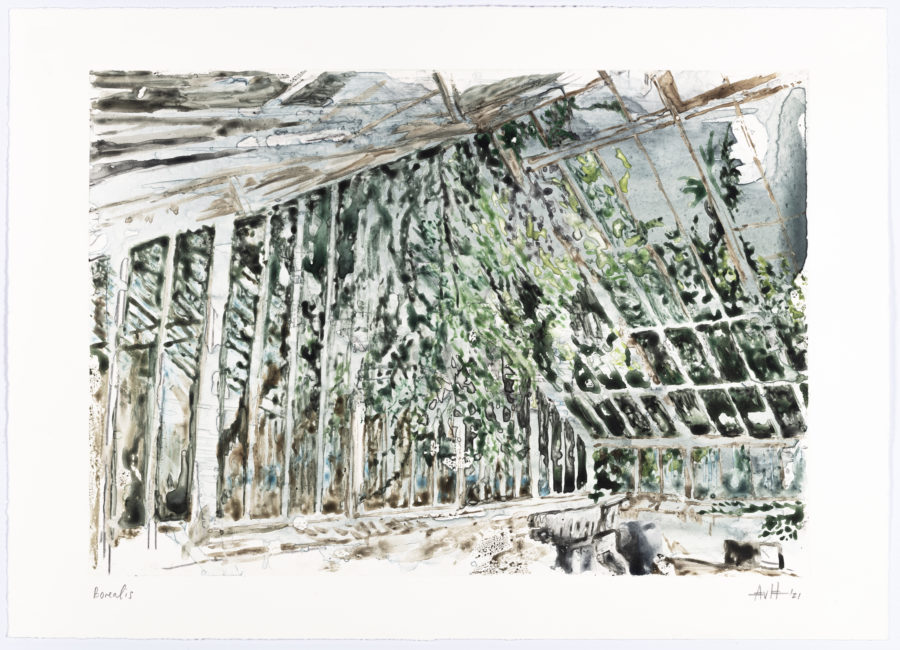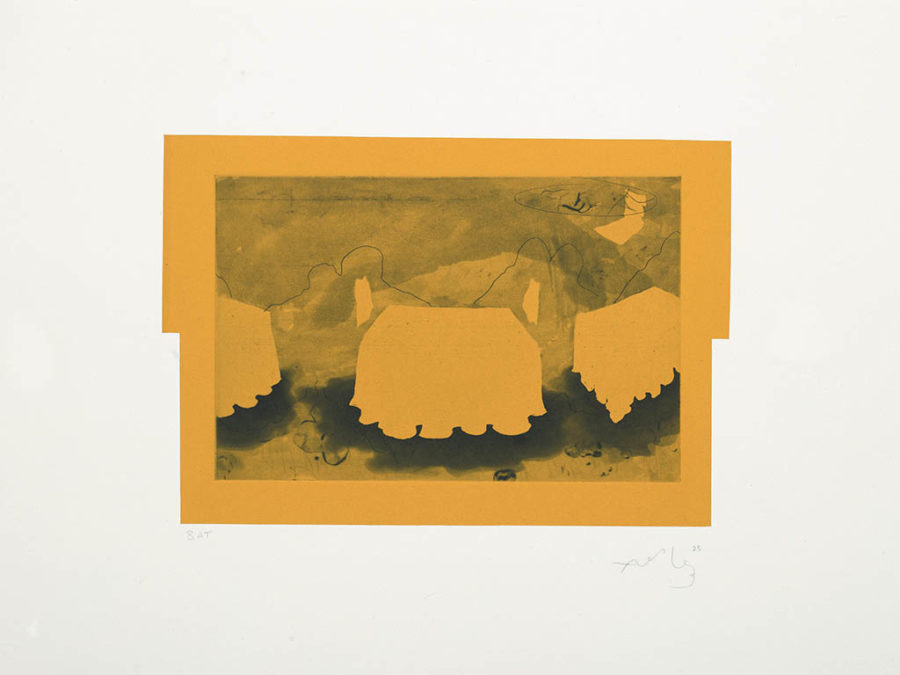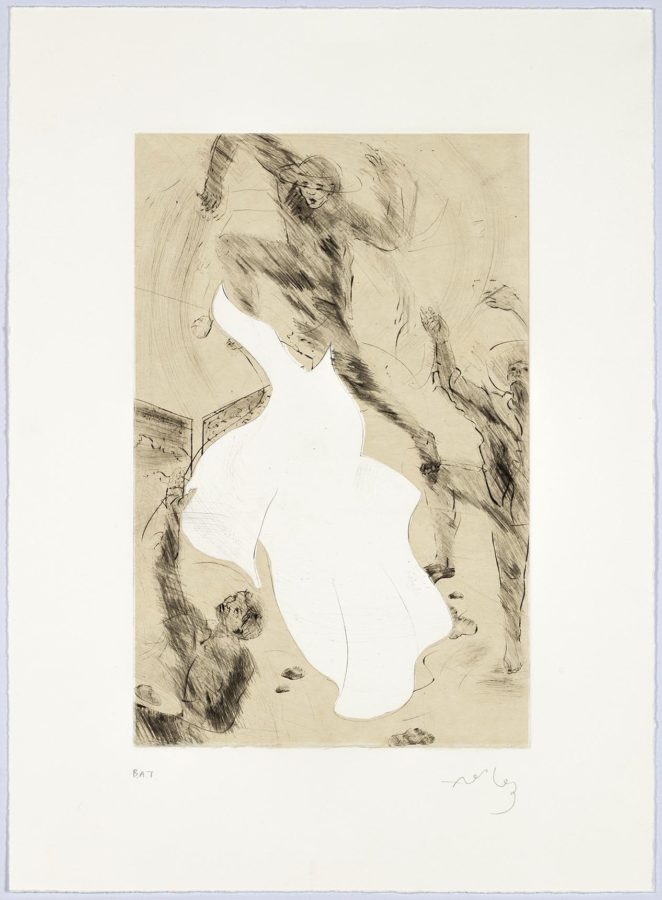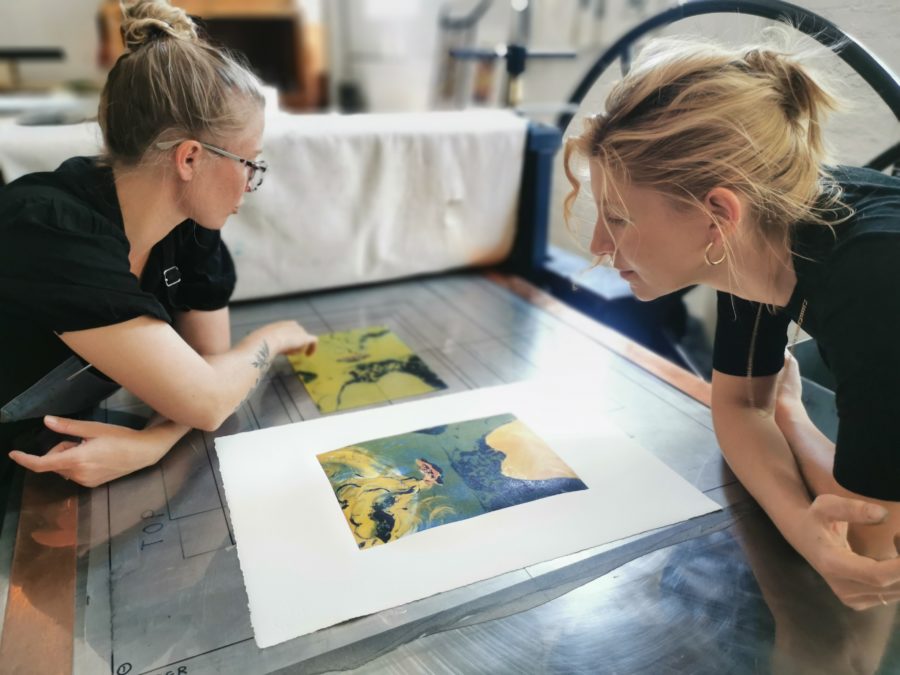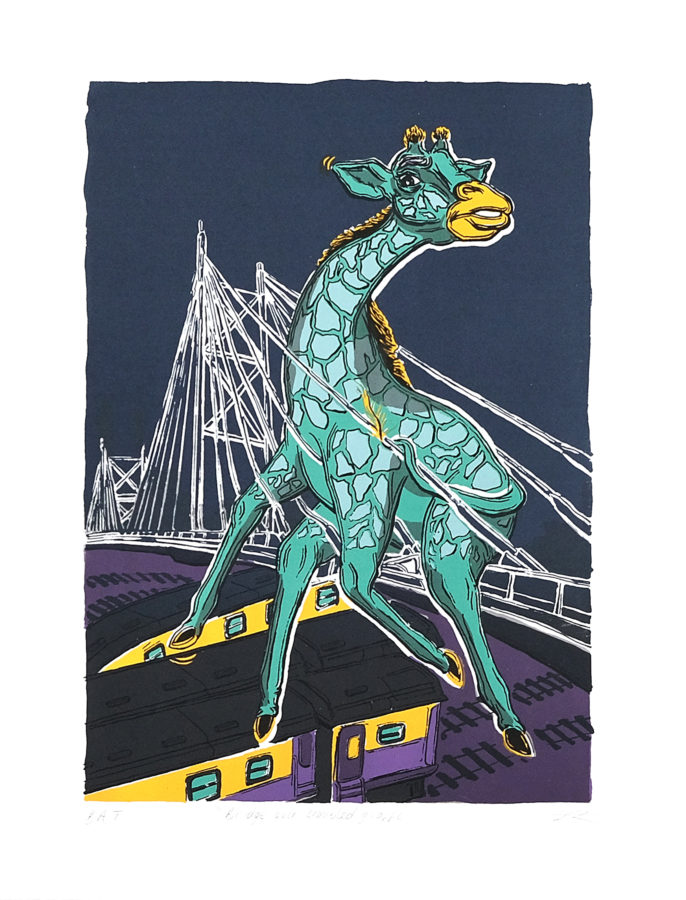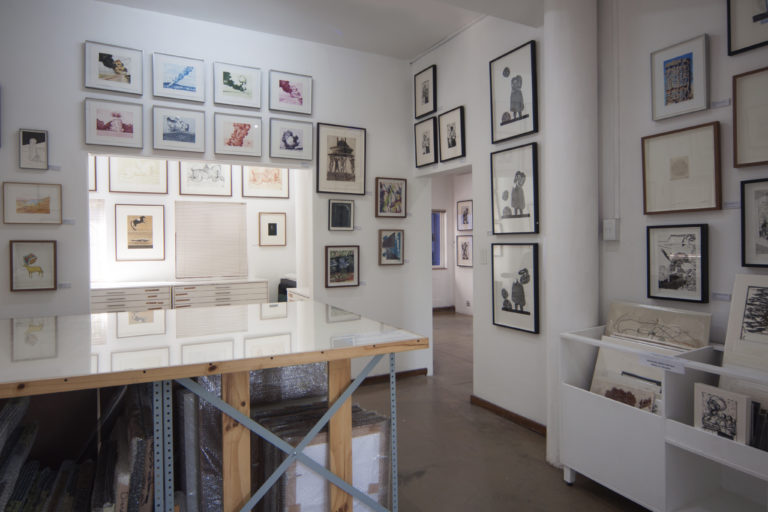
Starting an art collection is about more than just acquiring pieces—it’s a unique way to enrich your living space and connect with different perspectives. Collecting art serves as an investment in culture, and an opportunity to contribute to the ever-evolving artistic narrative.
David Krut Projects has always been dedicated to empowering emerging artists who have cultivated a strong and unique visual language along with exceptional technical skill. We invite you to consider the following artists to find the next overnight superstar!
Maaike Bakker
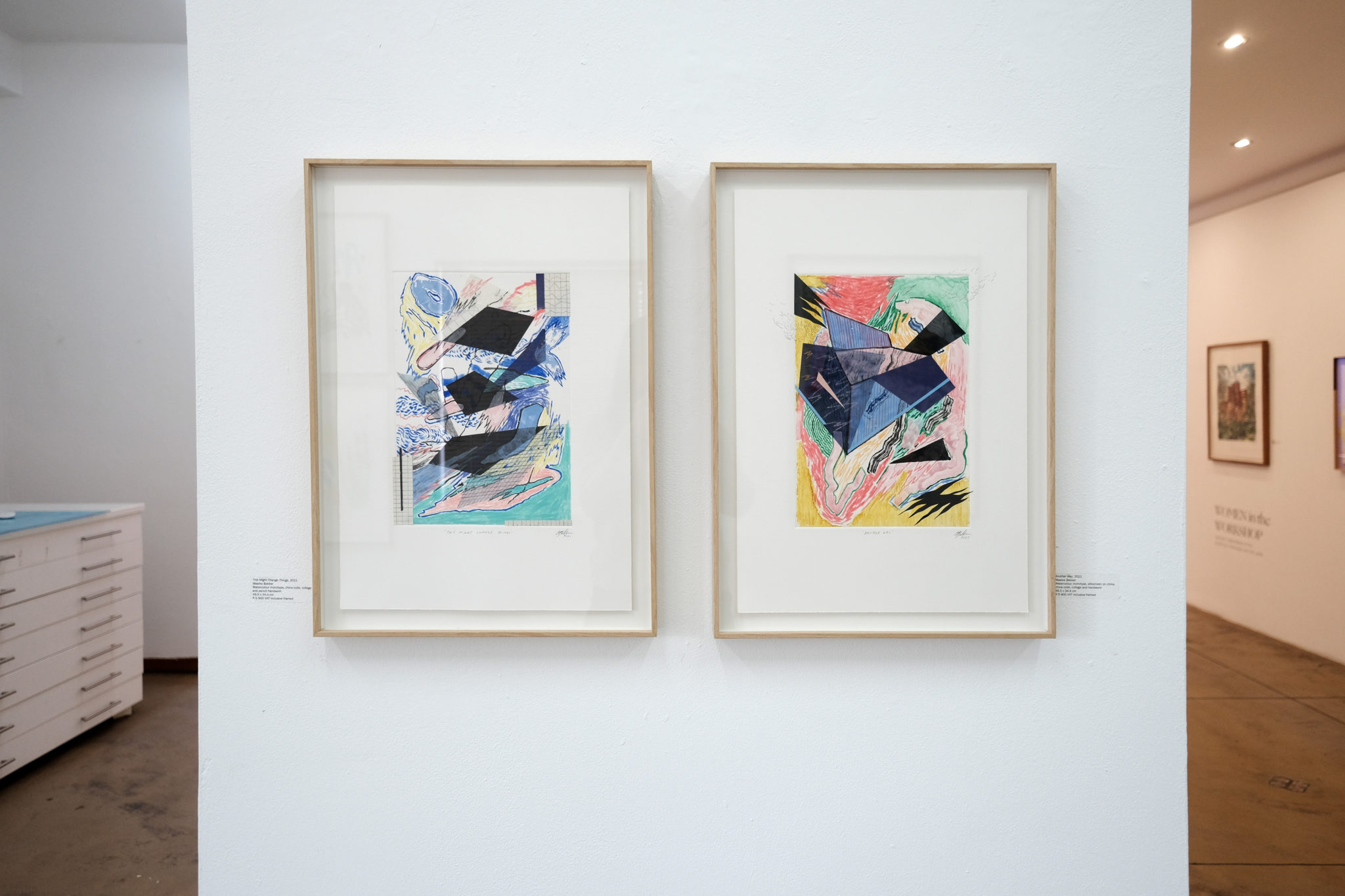
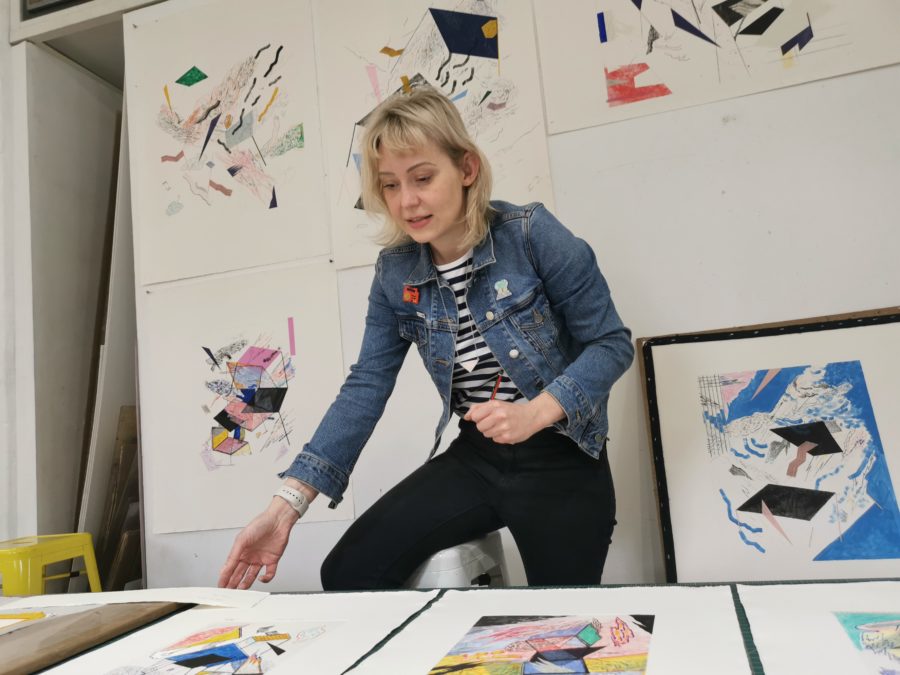
Maaike Bakker is a visual artist and illustrator currently living in Johannesburg. She obtained a degree in Visual Arts and her MA in Fine Art from the University of Johannesburg. Primarily, she works with sculpture and other installation-based mediums, as well as with digital art.
She first came to collaborate with David Krut Workshop in 2021, where she started creating watercolour monotypes with collage elements and chine collé . This collaboration continued through to 2022 and resulted in a solo exhibition of her work, ‘An Answer to an Unknown Question’ in that same year.
Through line-based patterns and soft, colourful shapes, Bakker’s work explores themes of notation and ephemerality. Her practice also investigates limitations imposed by systems or structures and aims to determine at what point such may become excess and irrelevant, ultimately exploring futility. Bakker plays with abstraction in her work, seeking to depict scenes from alternate realities. The visual languages she employs in her artmaking are typically precise and create compositions that have energy and a sense of movement as she makes use of shapes and colour as seen in the works This Might Change Things (2021) and Another Way (2021). The works feel somewhat explosive, containing sharp and jagged shapes within a field of brilliant colours.
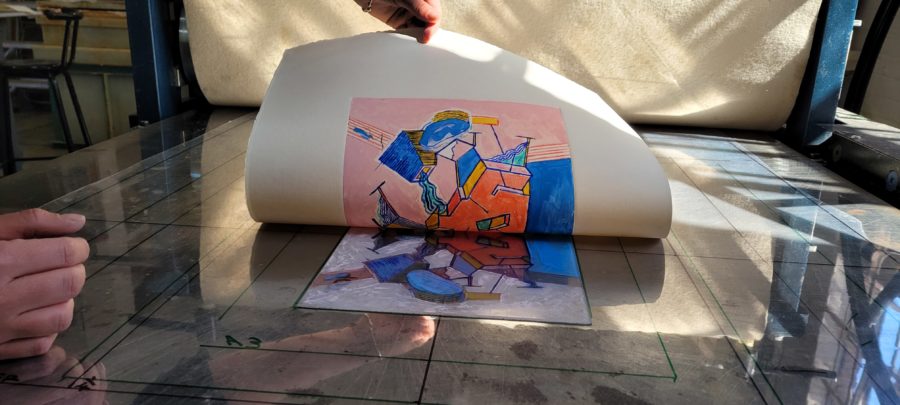
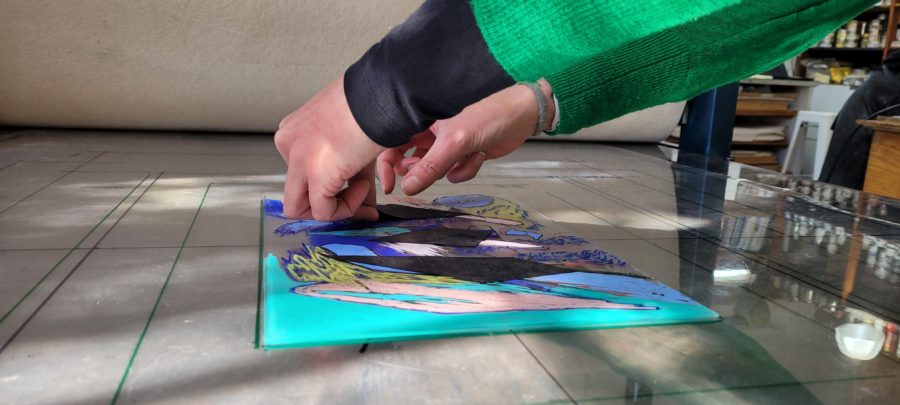
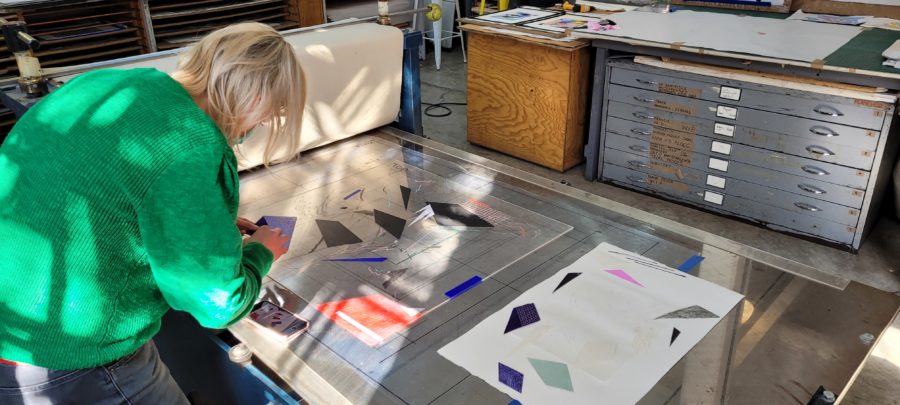
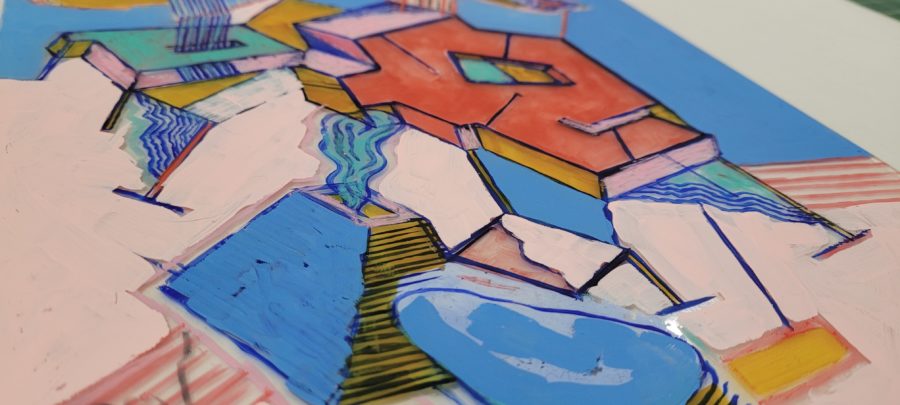

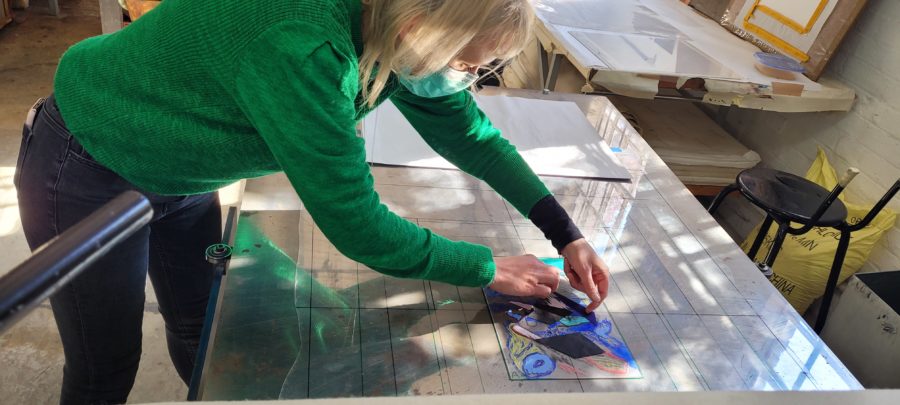
Olivia Botha


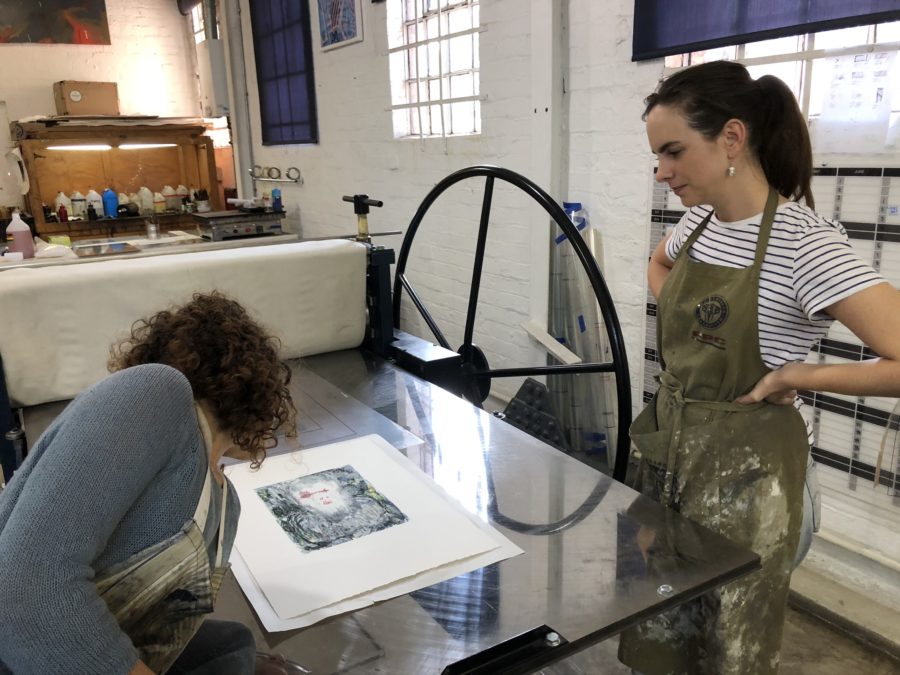
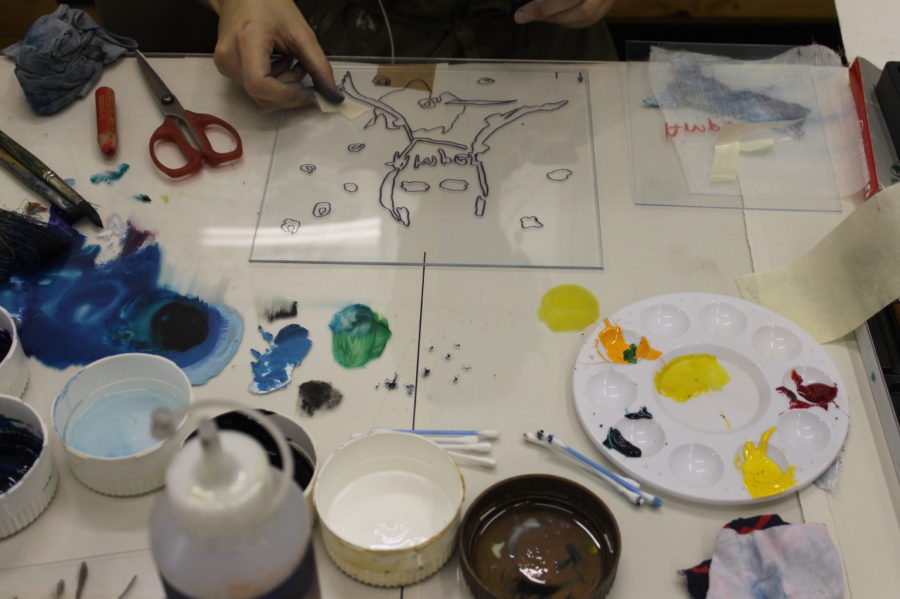
Olivia Botha is a multi-disciplinary artist working predominately in video performance, installation, collage and painting. She is interested in concepts of language – how we communicate, and how we are unable to communicate. Through this framework, Botha explores the different ways in which our relationships – with inanimate objects, as well as the animate – affect our lives.
Botha was born in Bloemfontein and raised in Cape Town, South Africa. She holds a Fine Art degree from the Michaelis School of Fine Art at the University of Cape Town, where she graduated in 2017. In 2018 Botha received the Cassirer Welz Award, which resulted in a new body of work exhibited at SMAC Gallery in Johannesburg. After her residency at the Bag Factory, she stayed on as a resident artist at the Bag Factory Artists’ Studios. Botha has also participated in numerous group shows, most notably at The African Center in New York, Turbine Art Fair in Johannesburg, ABSA Gallery in Johannesburg and at the National Gallery of Zimbabwe, Harare.
During her 2020 residency at the David Krut Workshop, Botha worked towards producing a collection of intriguing emotive portraits – her typical choice of subject. The paintings were made in conversation with an earlier series of trace monotypes.
The monotypes are characteristically dreamlike and almost monstrous whereas her paintings are more familiar in their humanness. The works reflect a yearning for connection and understanding, but maintain the feeling that such desires remain elusive as we exist as separate beings and in a time when we are deliberately keeping a distance from each other.
In her painting practice, Botha works fast and in an intrepid manner. The artist resists the urge to examine her marks too closely, which allows her to draw an intuitive representation out of her brush. In this way, she accepts all marks as part of the process.
Fanie Buys
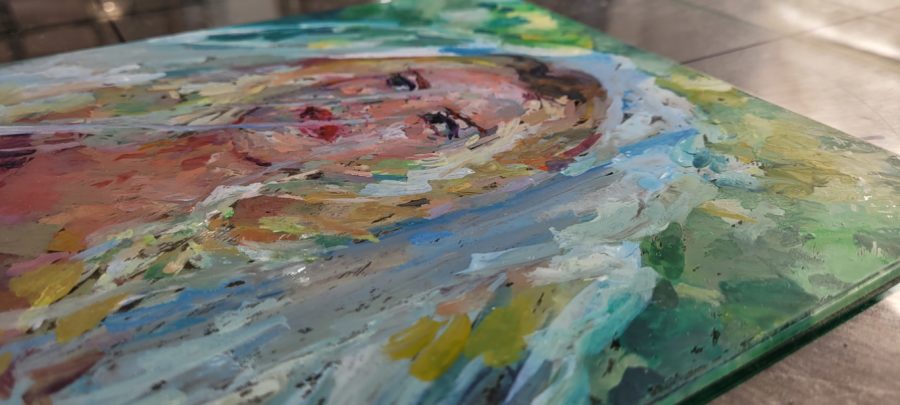
Fanie Buys was born in Gansbaai in 1993. He attended the Michaelis School of Fine Art, graduating with a distinction in Studiowork in 2016. Buys was a co-recipient of the Judy Steinberg Award for Painting and the Simon Gerson Award for an exceptional body of work.
Buys received training in printmaking, but now works primarily with oil painting. His paintings explore how the human body gets represented in various types of media, such as paparazzi photos, lost family picture albums, screenshots, etc. By depicting these types of images in oil paintings, Buys attempts to capture personal experiences and provide the viewer with a glance into the subject’s experience.
On this series of monotypes, created in 2021 in collaboration with the David Krut Workshop, the artist has said:
“The first time I saw duchess satin was in the totally pink interior of Fabric World in Tommy Joubert Plaza 2 in George, it felt like very expensive damp coursing. It is with this sense of confinement that I approach these prints: all images of the late Anna Nicole Smith in wedding dresses. A young Texan dancer (in the tawdry sense) who rose to fame by marrying an octogenarian oil tycoon, her life was punctuated by nuptials. Either expectation of marriage, or being a bride, hemming her in, stopping her having her own desires and direction: like condensation trying to leave a greenhouse. These works consider the sublime disgust of wedding processions: sweat and max factor adorning a bride’s top lip.” – Fanie Buys, December 2021
Heidi Fourie
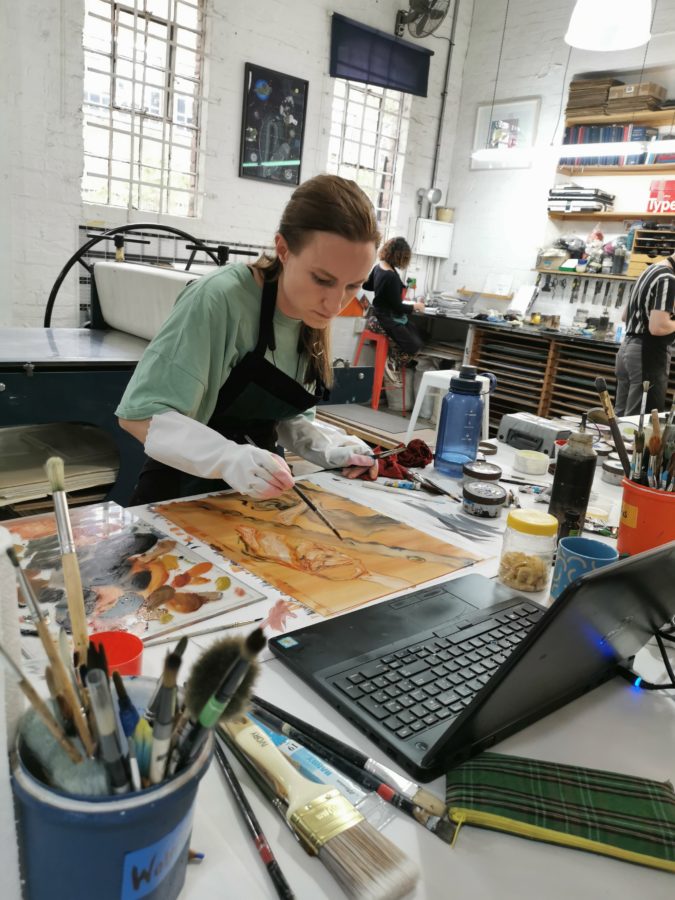
Heidi Fourie is a painter based in Pretoria. She completed her Bachelor of Fine Arts in 2012 at the University of Pretoria, for which she received the Bettie Cilliers Barnard Bursary for Fine Arts.
She first collaborated with David Krut Workshop in 2017 and has since had her work featured in numerous group shows presented by us. In 2021, We hosted a solo exhibition of Fourie’s work, Grass You Can Swim In, featuring prints made in the workshop, as well as paintings. The following year, 2022, saw another solo exhibition for Fourie, On Soft Ground, consisting of soft-ground etchings. In 2023 she once again collaborated with David Krut to produce a series of Monotypes that were featured at Latitudes Art Fair earlier this year.
Her subject matter consists of figurative studies of everyday scenes of figures and familiar environments. This focus enables her to explore a balance between gestural and polished mark-making. In 2020, she began to explore the wild, natural landscape of the highveld that stretches between Johannesburg and Pretoria. It is natural to get lost in Fourie’s images – her figures melt into the imagined landscape – a testament to her technical expertise. Fourie’s visual world is built around the total immersion of figurative motifs into the natural world, using composition and brushstrokes which entice the eye to differentiate between what could be a limb or a branch.
Stephen Hobbs
Stephen Hobbs was born in Johannesburg in 1972. Since 1994, Johannesburg has served as a critical reference point for Hobbs’ artistic and curatorial insights into the apartheid-city-turned-African-city, with a particular interest in the impact of defensive urban planning and architecture on the behavioral aspects of city and society. Hobbs functions not only as a practicing studio artist and dedicated printmaker, but also as a public arts curator and advocate.
Hobbs’ printmaking practice is informed by the complex, often obfuscating, visual language and urban defensive planning used to construct cities. He works predominantly in etching, linocut and monotype, and his prints serve as a distillation of his practice – public and studio-based.
Dazzle camouflage has been a key trope in Hobbs’ practice for many years – a zebra-like pattern used on gunships in the early 1900s to fragment the visual field of enemy sites in combat situations. Although dazzle patterning became obsolete after World War I, Hobbs has mined the potential that such visual deception presents for aesthetic reflection on dystopian urban environments. During Hobbs’ recent stay in the Republic of Ireland 2019-2021, he began to activate a new making trajectory influenced by a three-year-long research project resulting in his Permanent Culture exhibition in Cape Town and Johannesburg in 2015. Consequently Hobbs has embarked on a new body of work and thinking informed by living in rural Ireland.
Hobbs graduated from Wits University with a BAFA, in 1994. He was the curator of the Market Theatre Galleries (Johannesburg) from 1994 to 2000, and Co-Director of the purpose-built Gallery Premises (2004-2008) at the Joburg Theatre. Since 2001 he has co-directed the artist collaborative and public art consultancy, The Trinity Session, and since 2004 has co-produced a range of multi-medium urban and network-focused projects with Marcus Neustetter, under the collaborative name Hobbs/Neustetter. From 2017-2019, Hobbs joined the Graduate School of Architecture at the University of Johannesburg, as Unit Leader and resident critic. Since 2002 The Trinity Session has provided consultative and turnkey services for the conceptual development, coordination and curation of various scales of public art, in several major metropolitan areas in South Africa.
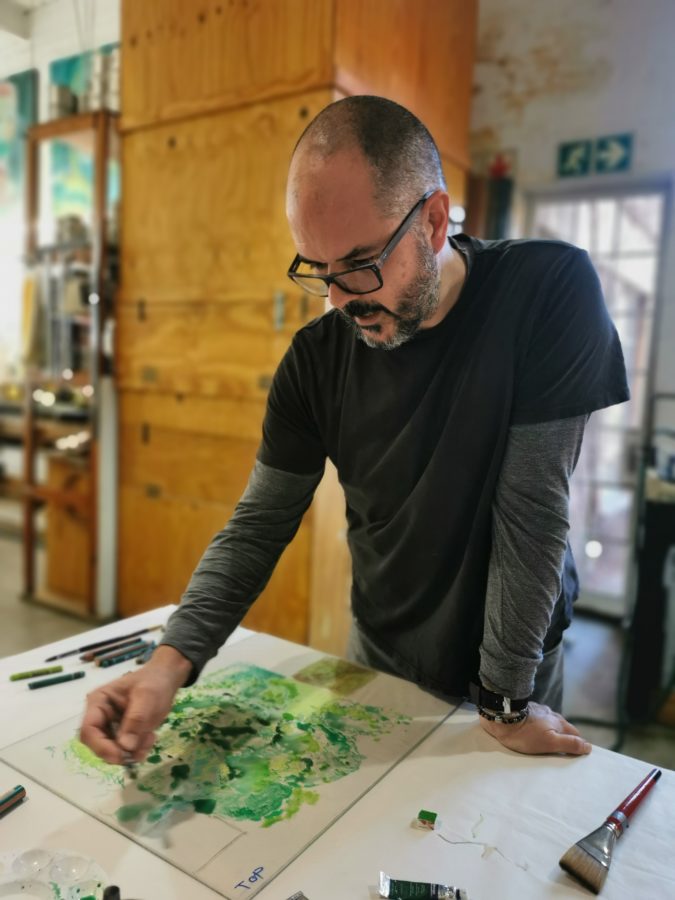
Stephen Hobbs was born in Johannesburg in 1972. Since 1994, Johannesburg has served as a critical reference point for Hobbs’ artistic and curatorial insights into the apartheid-city-turned-African-city, with a particular interest in the impact of defensive urban planning and architecture on the behavioral aspects of city and society. Hobbs functions not only as a practicing studio artist and dedicated printmaker, but also as a public arts curator and advocate.
Hobbs’ printmaking practice is informed by the complex, often obfuscating, visual language and urban defensive planning used to construct cities. He works predominantly in etching, linocut and monotype, and his prints serve as a distillation of his practice – public and studio-based.
Dazzle camouflage has been a key trope in Hobbs’ practice for many years – a zebra-like pattern used on gunships in the early 1900s to fragment the visual field of enemy sites in combat situations. Although dazzle patterning became obsolete after World War I, Hobbs has mined the potential that such visual deception presents for aesthetic reflection on dystopian urban environments. During Hobbs’ recent stay in the Republic of Ireland 2019-2021, he began to activate a new making trajectory influenced by a three-year-long research project resulting in his Permanent Culture exhibition in Cape Town and Johannesburg in 2015. Consequently Hobbs has embarked on a new body of work and thinking informed by living in rural Ireland.

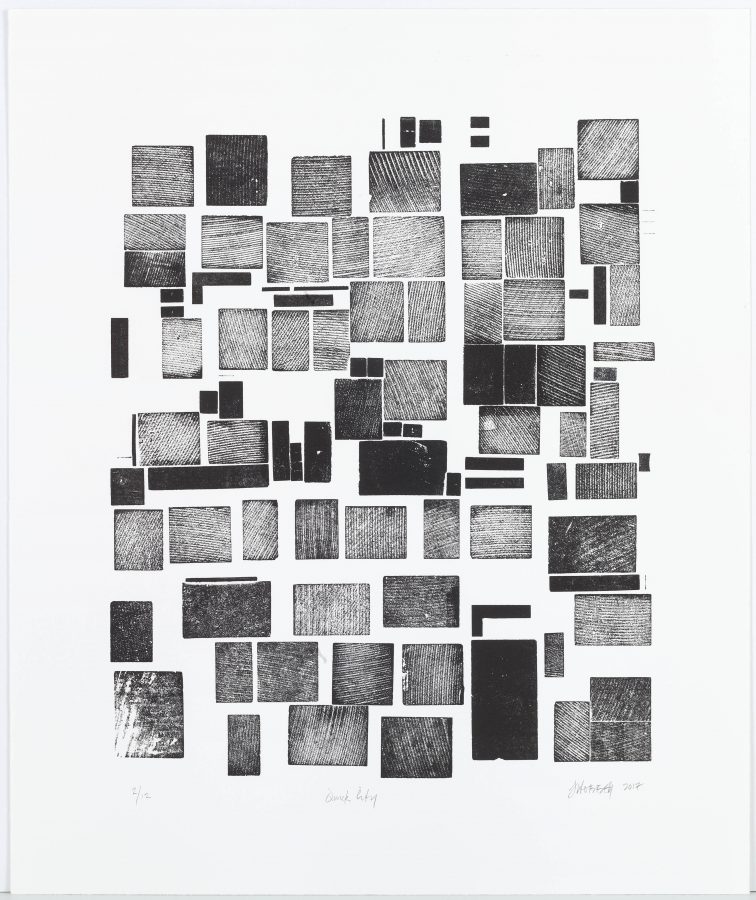
Lebogang Mabusela
Lebogang Mogul Mabusela (b.1996) is a multidisciplinary artist and a self-proclaimed monotypebabe and zinequeen based in Johannesburg. In 2019 she graduated with a BA in Fine Arts from the Wits School of Arts where she was also awarded the Standard Bank Fine Arts Prize. Mabusela has participated in a number of group exhibitions at the Wits Art Museum, The Project Space, Turbine Art Fair, Latitudes Art Fair, and the Design Indaba in Cape Town as part of top the 50 Emerging Creatives class of 2020. More recently she was a runner up recipient of the Young Womxn Studio Bursary sponsored by Sam Nhlengethwa and the Bag Factory Artists’ Studios. She is currently running a printmaking curatorial scheme called The Monotypebabe Curatorial. Mabusela prides herself in being the founder of Makoti Technologies™ (est. 2017), a Bridal gifts shop offering a dynamic range of gunz, tools and technologies that enhance women’s desires and roast patriarchy, keeps them safe while maintaining their attitudes.
Mabusela critically analyses and focuses on issues such as the patriarchy, racism and heteronormativity, exploring these themes through a variety of formats and methodologies. Mabusela uses humour and satire in her artworks to address serious issues such as rape, harassment, shaming, etc. Her monotypes depict scenarios wherein incidents of the issues she addresses arise, but from a somewhat humorous perspective.

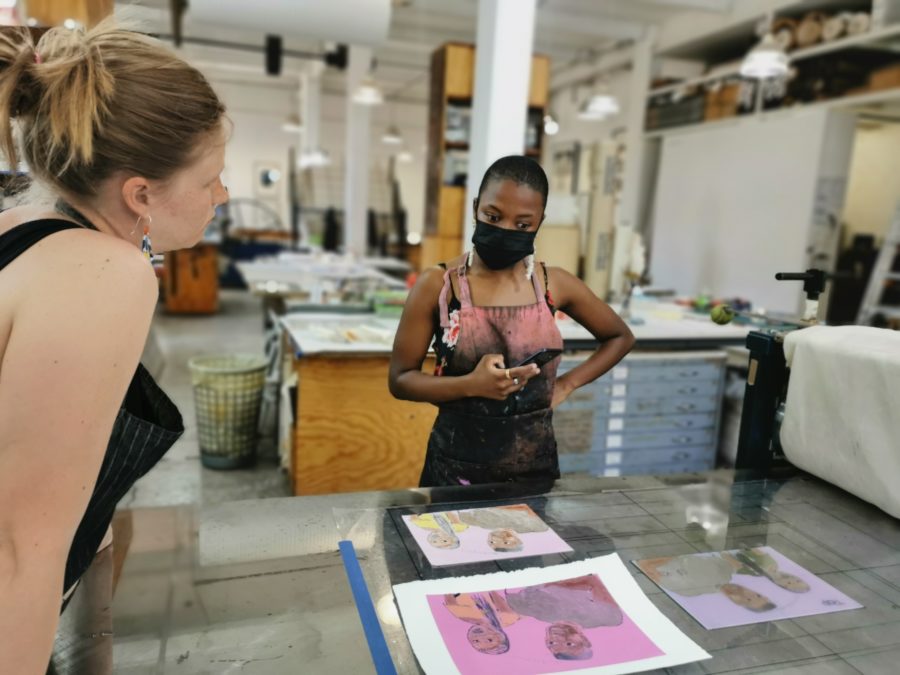
Maja Maljević

Maja Maljević was born in Belgrade, Serbia, in 1973. Having completed her schooling, she spent seven years obtaining her Masters in Fine Arts at the University of Belgrade, graduating in 1999. In 2000 she moved to South Africa, in order to escape the political turmoil in her own country. She has been living and working in Johannesburg since then.
Maljević’s particular style begins with “dirtying” the canvas with a layer of bright paint that breaks the baldness of the white surface and opens up the space for Maljević’s intuitive jigsaw endeavour. Onto this ground, Maljević builds up surfaces with drips, blocks, bands and waves of colour, searching for harmony between colour and form, line and shape, expansive surface and small detail. For Maljević, physical movement is an important part of the process – never can she be found sitting at an easel. Through her own version of gestural abstraction, Maljević prevents the composition from becoming staid and self-indulgent, as she has put it, and allows action and conflict to occur between the different elements with which she is engaged. Reworking the formal mechanisms of Modernism to suit her contemporary needs – as a painter, a printmaker and also most recently as a sculptor – Maljević’s primary objective is coherence between all the individual elements within a composition, whether they are in conflict or co-existing harmoniously, and therefore its integral logic.
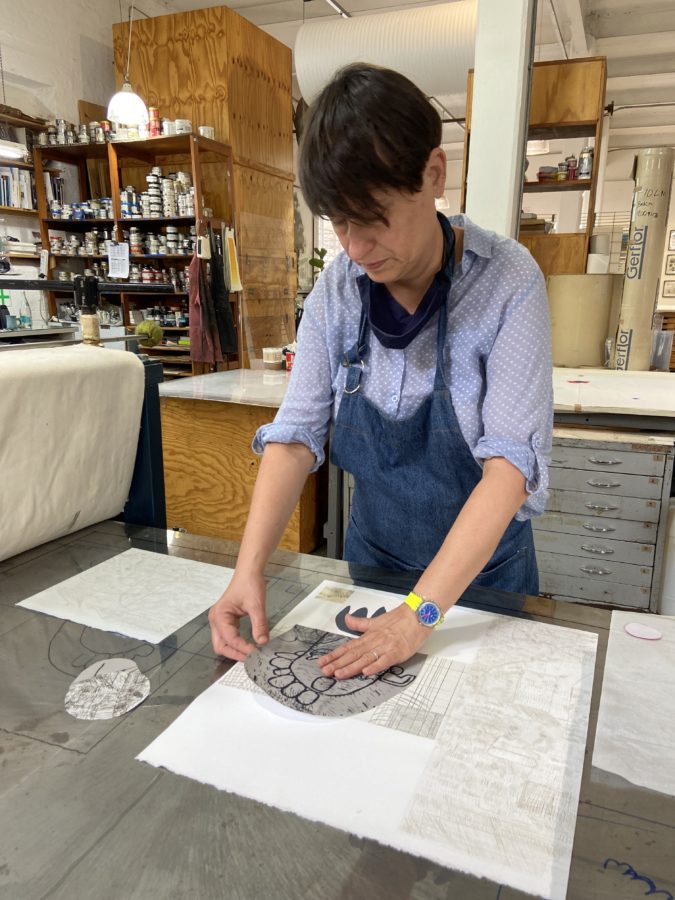
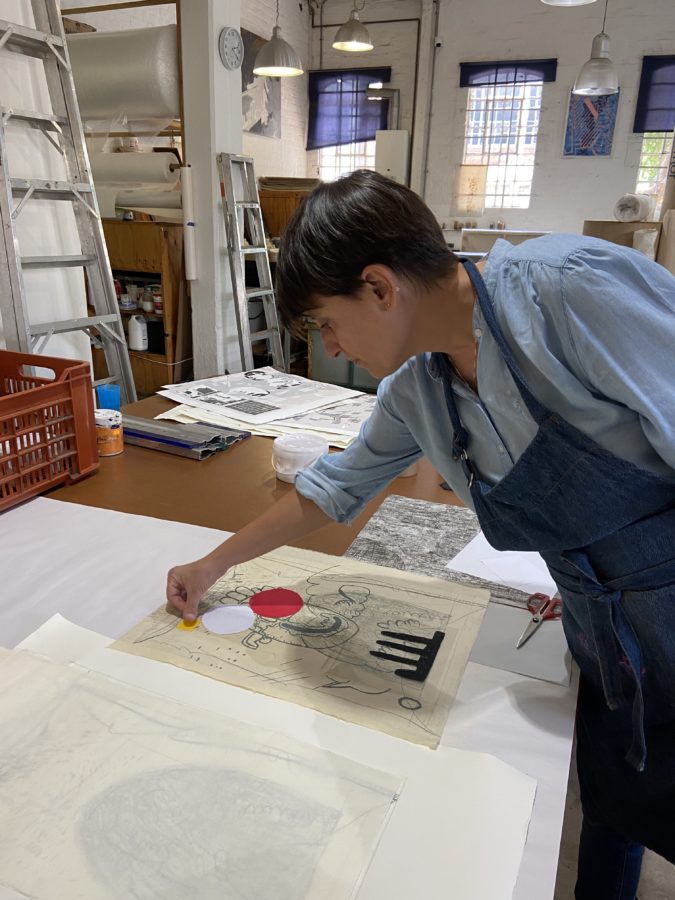
Adele van Heerden was born in Cape Town. She obtained a degree in Fine Arts from the Ruth Prowse School of Art in 2010, after which she continued her studies at the University of South Africa, obtaining a BA in History and Politics. In 2015, she graduated from the University of Cape Town with an Honours Degree in Curatorship. Van Heerden is thus able to bring together ideas from her various fields of study – – in her fine arts practice.
Van Heerden is compelled to paint what she sees in her daily life and travels. Her images explore environments, camera in hand, to discover and document them, especially human-made spaces and built environments that work in symbiosis or in juxtaposition with the natural world. Her subject matter therefore predominantly centres around urban, natural landscapes and interior scenes. On returning to the studio, she draws and paints these images based on her photographs, onto the front and back of translucent drafting film – a technique of reverse-painting that is unique to the artist.
Van Heerden’s work is an act of existential meaning-making, artistic research and meditative practise. The goal is to capture a specific moment in time, to freeze it and give shape to the experience, making use of images and ideas to reimagine her own life experiences.
Anna van der Ploeg
Anna van der Ploeg (1992) is a contemporary South African artist. Her professional practice is far-reaching and although she works primarily in painting, printmaking and sculpture, she is not limited to those fields. Anna has held several solo exhibitions, has shown in galleries locally and abroad, and has works in private collections and institutions, among which the South African National Art Bank. She has participated in artist-in-residence programs in Japan, India and France and is currently working on a video project with an artist from Berlin under the collaborative EveryMutter. Anna van der Ploeg is currently pursuing a masters degree in fine arts at KASK Royal Conservatory of Art in Belgium.
Her artistry is built on a foundation of technical competence and intellectual curiosity: she is vigorous in both her making and thinking. Anna is also an avid mountaineer and experienced rock climber, with the kind of resolve one might hope for in someone you’re tied to with a rope. On one hike in 2011, her party was swarmed by bees. Everyone was stung multiple times – except for Anna. After this she sought out a beekeeper with whom to apprentice, and began to keep bees of her own. Her research into the symbolic history of beekeeping laid the groundwork for her figurative imagery: the beekeeper becoming a recurring protagonist, the societal structure of the hive a synecdoche, and warm ochres combined with woad blue to define her preferred palette.
Van der Ploeg’s tendency to borrow from literary terms is significant. She is compelled by representational imagery for the qualities it shares with literature: an ability to be didactic, to create a fiction in which to probe at the truth. As a reader and an occasional writer of poetry and short stories, she has a sharp interest in language, as intimated by her titles. For her, writing runs parallel to making, and titles precede, or prompt, the actual artwork.
Here it feels relevant to note the finesse of Anna’s practice. Though the catalyst to a work is loosely conceptual, her process is labour-intensive, perceptive and specialized. Her dexterity and moxie – she makes her own clothes and generally a quick study in hand work – are not unrelated to her imagery or her mediums. Recently, carved, painted wood blocks have come out of her sustained interest in the confluence of print, painting and sculpture. In 2017, her experience as a printmaker led her to Japan, where she trained in Mokuhanga: traditional woodblock printmaking.
Since then she has continued to whittle away, evolving familiar materials into a medium made up of her own idiosyncrasies. This intuitive quality – the ability to follow even a very faint trail – serves as a guide, allowing her to traverse intersections between community, storytelling, poetry, a thought or a doubt.
She probes the metanarrative, and is content with a modest (or open-ended) answer. The feeling of effort, of something beyond cognition, is to her a kind of optimism. As a figurative artist, she searches for new metaphors to convey insights about our common assemblies, to find rhythms in the motion of social, artistic and intellectual contexts. She invites her subjects into spaces or landscapes that contain an intervention which allows for a sense of the new. Some of her images hint at an impulse towards surrealism, before changing direction to something altogether singular.
As an artist, her deep regard for the ability of art to lay common ground, to sidestep small talk, and to imagine things differently, has allowed her to engage sensitively, yet on her own terms, with a formative chapter in her country’s aesthetic practice. If art can provide scope for disparate knowledge systems, peoples, and ideologies to engage, then artists are cultural practitioners and conduits for the ruptures of our time. This meaning-making, this instigating of civil dialogue is an inevitable and necessary responsibility for contemporary South African artists.
Van der Ploeg’s work offers reflections with deeply felt acuteness, always emerging from somewhere just off the path.
Zhi Zulu

Zinhle Zulu goes by the artist name ‘Zhi Zulu’ is a 20-something-year-old illustrator, lecturer and cultural visual story-teller based in Johannesburg. Zulu obtained a Bachelor of Arts (Hons) in Visual Communication at the Open Window Institute as well as a Masters of Art in Design at the University of Johannesburg. In 2017, she won the Gold-craft Loerie award for illustration and was part of Design Indaba’s creative class of 2019. Zulu has participated in various exhibitions, including the Turbine Art Fair (2019-2022) represented by David Krut Projects. She represented South Africa at the Semerang International Illustration festival. Additionally, she runs an illustration studio called Zuluvisual, through which collaborates with various clients such as Absolut Vodka, Levis, Constitution Hill, Wanderland Collective, and FlySafair. Most recently, Zulu designed the new South African 20c coin.
Zulu is particularly interested in representation in our newly democratic South Africa and how that can be interpreted through illustration. As a visual communicator, she thinks it’s important for young South African creatives to spearhead the exploration of newness in how Africa is portrayed.
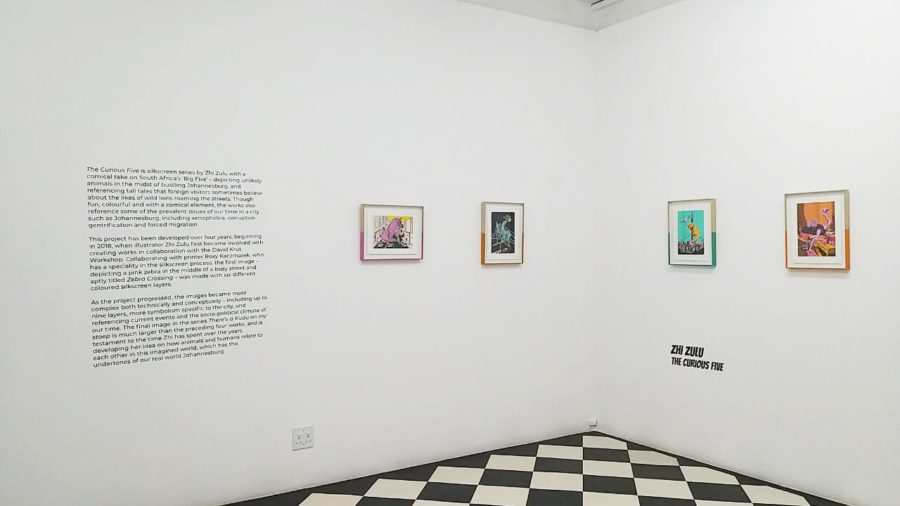
At THE BLUE HOUSE, we are lucky to house exceptional works from various artists. Please pop in to 152 Jan Smuts Ave, Parkwood, Johannesburg to browse through our collections.
